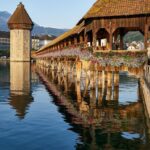Switzerland Travel Guide: Discover the Land of Mountains and Lakes

Welcome to our ultimate Switzerland Travel Guide, your passport to discovering the enchanting wonders of this Alpine paradise. Switzerland is a place where breathtaking alpine vistas are the norm, and cows with bells have better views than most Manhattanites. It’s a country where ticking off a bucket-list item like skiing the Matterhorn is as easy as taking a Swiss train (spoiler alert: there will be lots of those) and where the phrase “Oh my God, it’s just like the postcard!” is uttered so often, it should be printed on its currency.
Planning a trip to Switzerland can be almost as daunting as pronouncing “Chäsbängel,” but our insightful guide will help you navigate your way around the land of mountains and lakes like a local. So, buckle up, grab a Toblerone, and let’s take a ride through the Swiss Alps with the best Switzerland travel guide!
Best Time to Visit Switzerland
For those who can’t quite make up their minds, Switzerland is a year-round destination that’s as versatile as a Swiss army knife. And with our blog as your go-to source for Swiss travel inspiration; you won’t even miss having the best travel guide for Switzerland in your bag!
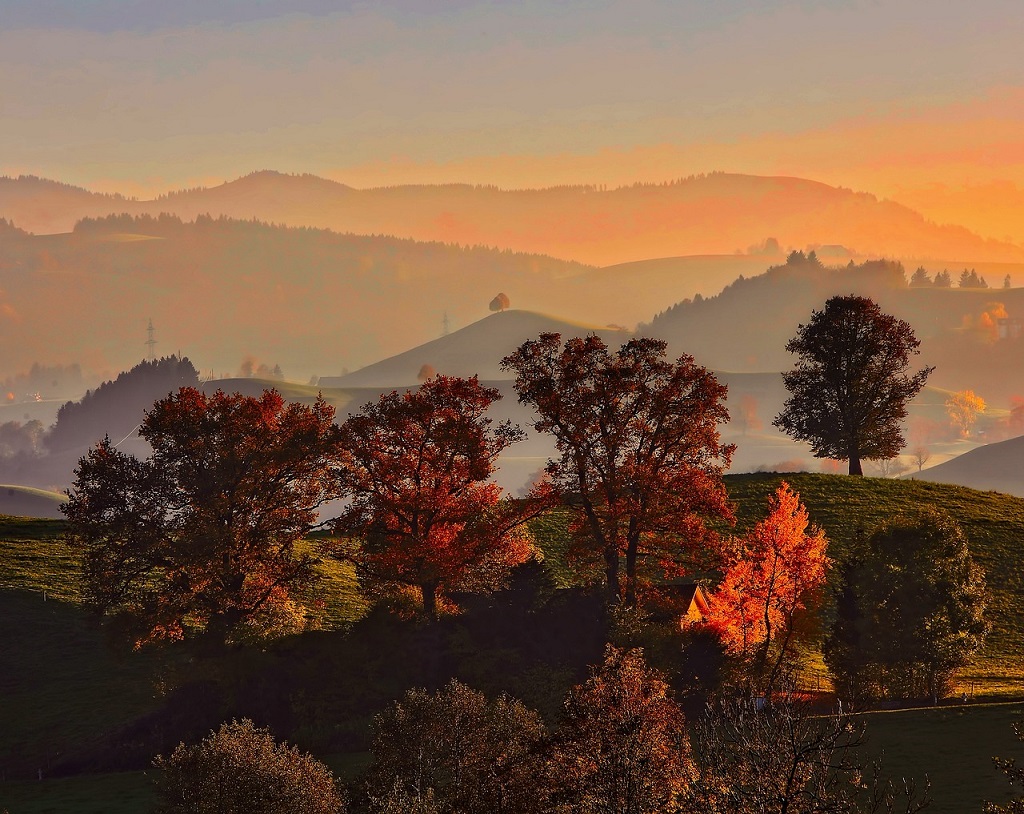

Switzerland is a country that captivates visitors with its stunning landscapes, charming cities, and diverse range of activities. Whether you’re dreaming of exploring snow-covered mountains, basking in the summer sun by crystal-clear lakes, or immersing yourself in the vibrant colors of autumn, Switzerland has something to offer in every season. So, when is the best time to visit this enchanting country?
Spring (April to June):
Springtime in Switzerland is a magical season as nature awakens from its winter slumber. The countryside is adorned with colorful flowers, and the snow begins to melt, revealing lush green meadows. This is a great time to visit if you enjoy mild temperatures, fewer crowds, and the opportunity to witness the blooming of alpine flora.
In spring, there are tulips, cherry blossoms, and magnolias everywhere, especially in the month of April. A great tip is to visit the Tulip Festival in Morges, and Zurich is filled with magnolias at the end of March. Spring is not the best time for mountain hiking, but it’s a great time to enjoy the cities and take some cable car rides without hiking trails.
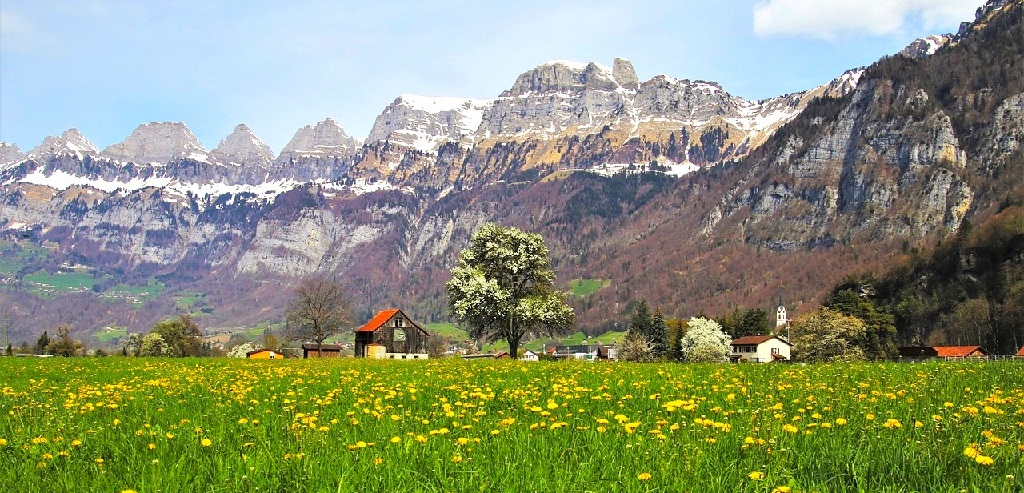
However, it’s important to note that April can still experience occasional snowfall as it is a transitional month. In May, especially in higher regions like the alpine villages, it can still be chilly. But don’t let that deter you, as the beauty of spring in Switzerland is truly captivating, even with a touch of winter’s lingering charm.
Summer (July to August):
Summer is peak tourist season in Switzerland, and for good reason. The weather is warm, the days are long, and the country is alive with festivals, outdoor concerts, and vibrant street markets. It’s the perfect time to explore the Swiss Alps, go hiking, mountain biking, or indulge in water sports on the pristine lakes. Interestingly, even in summer, it is possible to encounter snow in Switzerland.
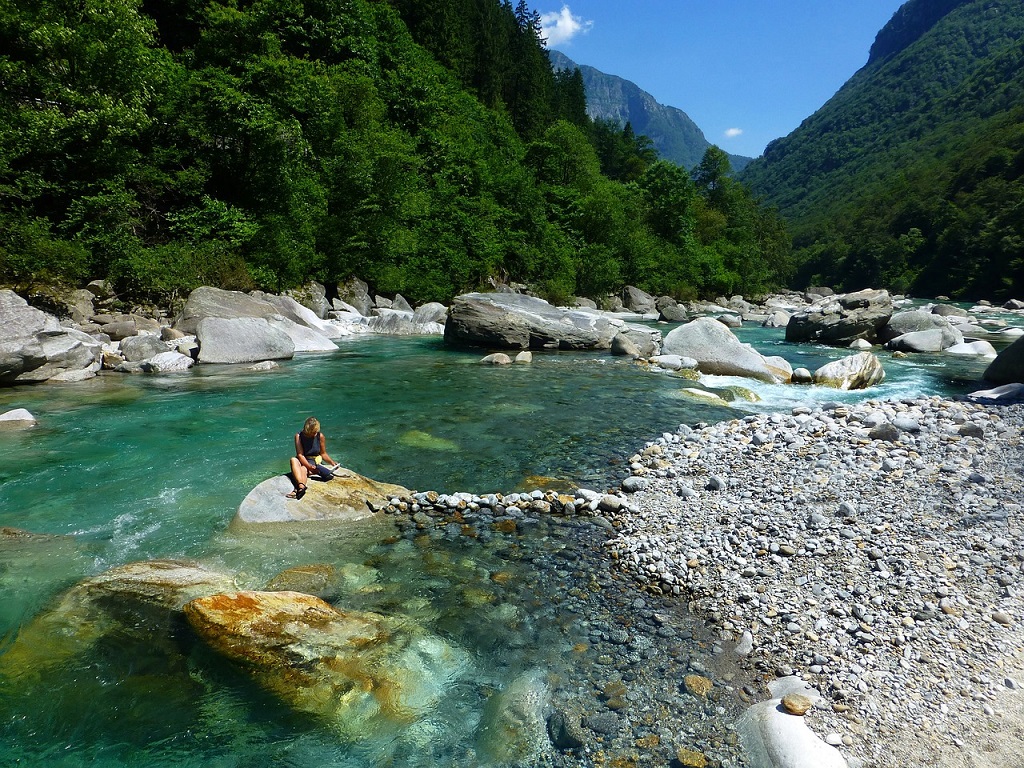

By taking a cable car and ascending to the top of a high mountain, you can witness breathtaking snowy landscapes. It’s a remarkable experience that showcases the diversity and beauty of Switzerland’s natural wonders. So, whether you’re seeking sunny adventures or a glimpse of snow-capped peaks, summer in Switzerland offers something for everyone.
Autumn (September to November):
Autumn in Switzerland is a feast for the senses. As the leaves turn vibrant shades of red, orange, and yellow, the landscape transforms into a picturesque wonderland. It’s a fantastic time for nature lovers and photographers to capture the beauty of Swiss forests, vineyards, and charming villages.


However, it’s worth noting that November is generally not the ideal time to visit Switzerland. It is considered low season, and some attractions, including cable cars and panoramic trains, may be closed for maintenance. Additionally, November tends to be a rainy month, so it’s recommended mainly for those who have limited options for travel dates and are interested in exploring the historical cities such as Lucerne, Bern, and Zurich, which are beautiful regardless of the season.
For a more seamless and enjoyable experience, it’s best to plan your visit to Switzerland during other months when the weather is more favorable and attractions are fully operational.
Winter (December to Mai):
Switzerland is world-renowned for its winter wonderland. With its snow-capped mountains and extensive ski resorts, it’s a paradise for winter sports enthusiasts. From skiing and snowboarding to ice skating and sledding, the options are endless. The festive atmosphere, with Christmas markets and cozy chalets, adds a touch of magic to the experience. January and February are the months with the highest snowfall intensity, making it the perfect time to witness the picturesque snow-covered villages. If your desire is to see the villages blanketed in white, we recommend staying in alpine villages at higher altitudes such as Zermatt and St. Moritz, for example. These villages offer breathtaking scenery, excellent skiing opportunities, and a cozy winter ambiance.


Overall, Switzerland is a year-round destination, and the best time to visit depends on your preferences and the activities you want to engage in. No matter when you choose to visit, Switzerland will never fail to mesmerize you with its natural beauty, cultural richness, and warm hospitality. So pack your bags and embark on an unforgettable journey through the heart of Europe. The best time to visit Switzerland is whenever your heart desires to explore this breathtaking country.
Glorious Landscapes and Thrilling Adventure: The Best Things to Do in Switzerland
Finding Hidden Gems in Switzerland’s Urban Landscapes
When you touch down in Switzerland, don’t forget to pack your cultural curiosity because you’re in for a treat. Whether you prefer the old-world charms of Lucerne or the cosmopolitan appeal of Zurich, these Swiss cities are perfect for satisfying your wanderlust and palate.
If you want to dip your toes into the Geneva lifestyle, be prepared to indulge in world-class museums, historic architecture, and enough cheese to satisfy even the most demanding of taste buds. Meanwhile, Lugano oozes class with its lakeside setting and gourmet cuisine.
Chasing Waterfalls
It’s a fascinating fact about Switzerland that it boasts over 150 waterfalls throughout the country, offering a wide range of options for visitors. From hidden gems accessible only through challenging hikes to popular attractions easily reached by all, each of these captivating cascades boasts its own unique beauty.
When planning your trip to Switzerland, be sure to include a visit to one of these stunning waterfalls. Switzerland’s waterfalls are as varied as they are thrilling. Sparkling, thundering and subterranean.
If you’re unsure which waterfall to visit, our Switzerland Travel Guide is the perfect resource to help you plan your adventure.
Discover the 5 Most Beautiful Waterfalls in Switzerland:
- Rhine Falls
- Staubach Falls in Lauterbrunnen
- Berglistüber Waterfall
- Trümmelbach Falls
- Giessbach Falls
Immerse yourself in the breathtaking sights and experience the refreshing energy of these natural wonders up close.
Improve: It’s a Switzerland fact that there are over 150 falls found in SwitzerlandChatGPT
It’s a fascinating fact about Switzerland that it boasts over 150 waterfalls throughout the country.
Activities in Summer
In the summer, the options for activities are much greater, and the list is extensive. You can enjoy activities such as hiking through canyons, electric bike tours, walking tours, zip-lining, mountain tobogganing, hot air balloon rides, cave visits, boat trips on turquoise lakes, tandem paragliding, via ferrata, and much more!
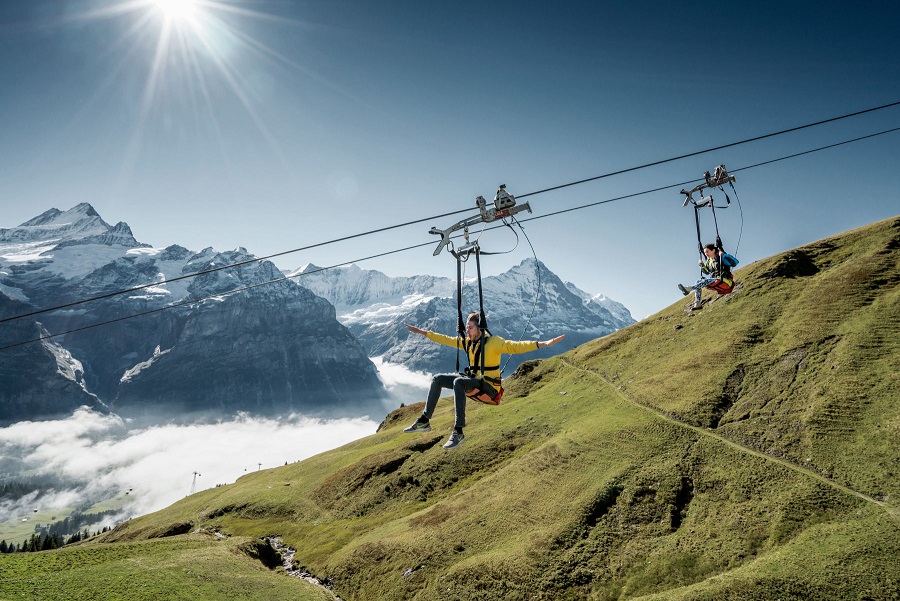

Activities in Winter
In winter, there are also options for activities that don’t require special skills, such as skiing and snowboarding. Travelers can enjoy ice skating on frozen lakes or artificial rinks, go snowshoeing, ride down the mountain on a sled, take a helicopter tour, or simply ride a cable car to the mountain top and appreciate the panoramic view from a restaurant. Switzerland’s diverse outdoor offerings in winter will leave you feeling invigorated (and a little winded).
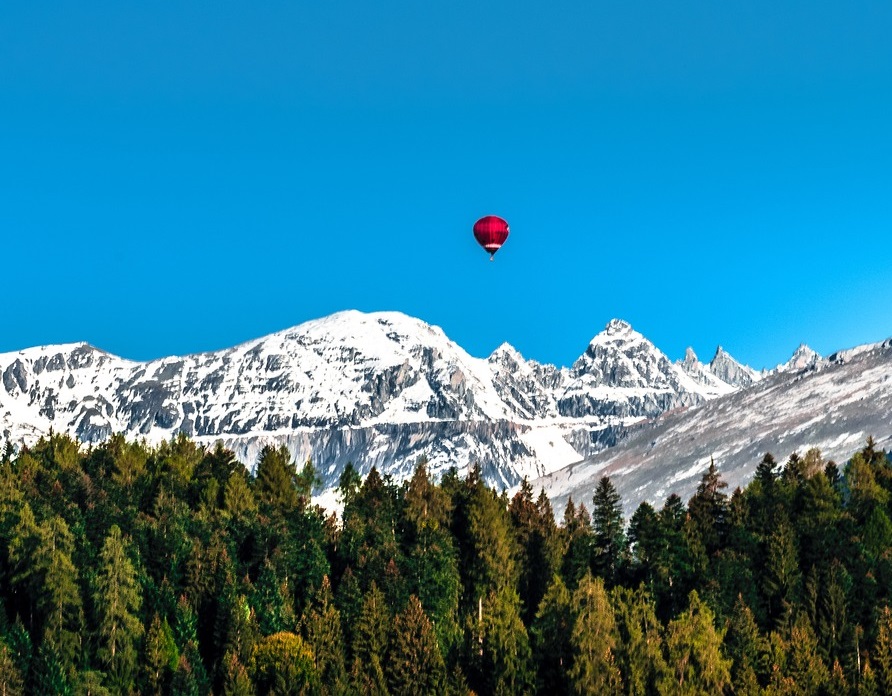

Don’t forget to plan your trip carefully, as each season of the year is well-defined and the activities vary greatly depending on the month of your visit.
Swiss Mountains to Visit
Love mountains but hate the sweat? Fear not, intrepid traveler! Switzerland has got you covered. You can still reach the top of the world without breaking a sweat, thanks to a plethora of mountain excursions that offer jaw-dropping panoramas and moments of pure wonder.
Why walk up when you can take the train, cogwheel rail, cable car, or gondola with minimal effort and maximal scenery? Get ready to feast your eyes on the likes of the Matterhorn, the Eiger, and the Aletsch Glacier without feeling like a Sherpa.
The cable cars are an integral part of Switzerland’s heritage. In a country with over 60% of its territory being mountainous, it’s no wonder there is an abundance of vertical transportation. Switzerland boasts over 1,700 cable cars and funiculars that traverse steep cliffs, bridges, and ascend to summits with breathtaking views. So sit back, relax, and let the cable cars whisk you away to incredible heights and unforgettable vistas.

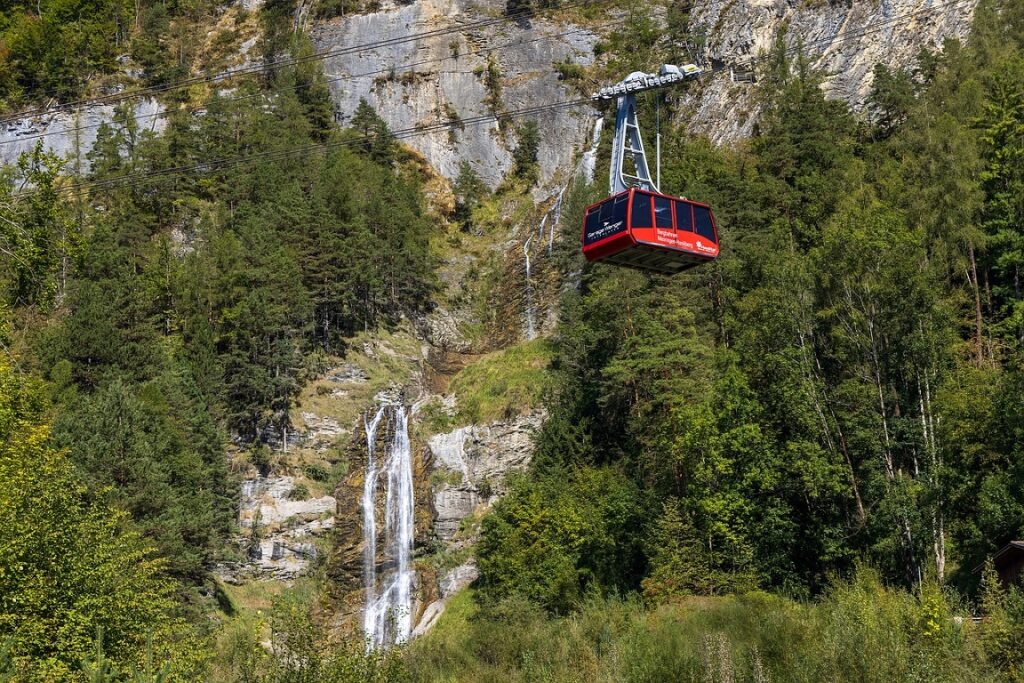
Switzerland offers a wide range of transportation options to suit every preference and duration, as each mountain has its own unique characteristics. If you’re looking for a quick half-day excursion, for example, you’ll find fast cable cars that can whisk you up to the top of a moderately high mountain. And if you prefer to avoid being suspended in the air due to a fear of heights, there are mountains that can be reached by train, eliminating the need for a cable car. With various modes of transportation available, you can tailor your mountain experience to match your comfort level and desired level of adventure.
Mountains Activities
At almost every mountain peak, you’ll find tourist facilities such as restrooms, restaurants, and souvenir shops. The more famous and well-known the mountain, the more activities and amenities you can expect to find. The activities at the mountain summits vary greatly. You can discover rotating restaurants, suspended bridges, glacier caves, skywalks, and much more. Each mountain offers its own unique attractions and experiences, ensuring that there is something for everyone.
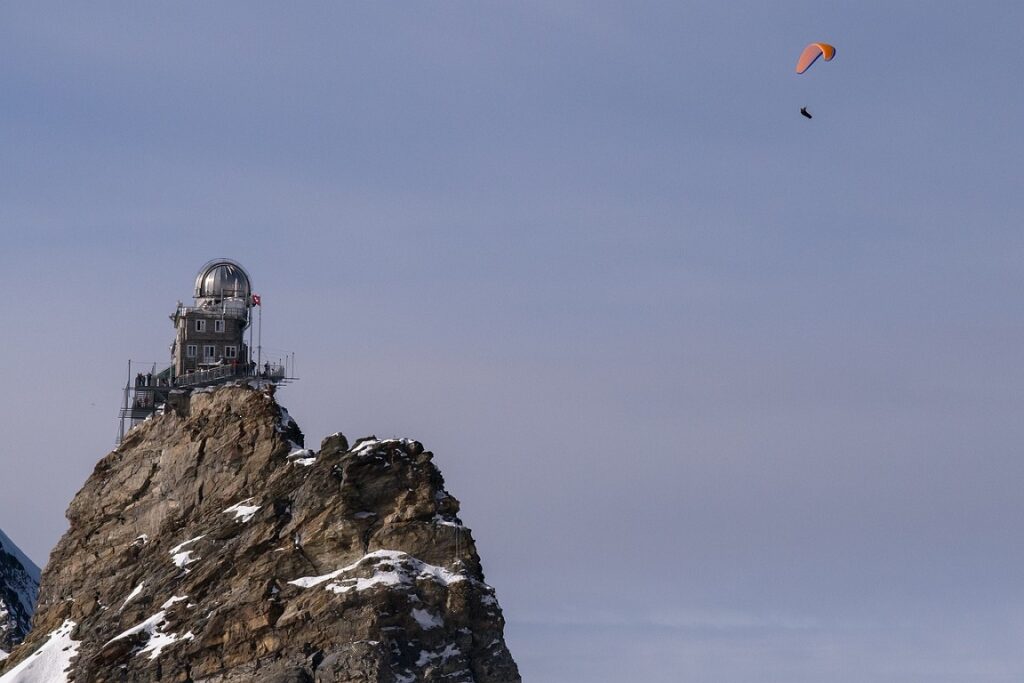

Most mountains have live webcams, allowing visitors to check the weather conditions at the summit before leaving their hotel. We recommend taking a moment to check the live webcam feed to ensure a pleasant and enjoyable experience at the mountain summit.
Swim, Sail, or Sunbathe
With some of the most glittering, jaw-droppingly beautiful lakes in Europe, you can take a dip or paddle your way around these aquatic wonders with ease. It’s like chasing waterfalls but way more refreshing.
With countless options to choose from, you can float on the serene surface of Lake Constance or windsurf like a pro on Lake Maggiore. This cannot be the best Switzerland travel guide if we don’t mention Lake Geneva, where you can unwind in neighboring spa towns and soak up some sun while admiring the stunning scenery.


Switzerland boasts a wide variety of lakes, catering to every type of traveler and preference. From large lakes perfect for scenic cruises, such as Lake Brienz with its turquoise waters, to Lake Lucerne, offering fjord-like landscapes, there is a lake to suit every taste.
For those seeking smaller, incredibly blue lakes where families can spend a day relaxing, destinations like Caumasee and Blausee are ideal. These picturesque lakes provide tranquil surroundings and stunning natural beauty.
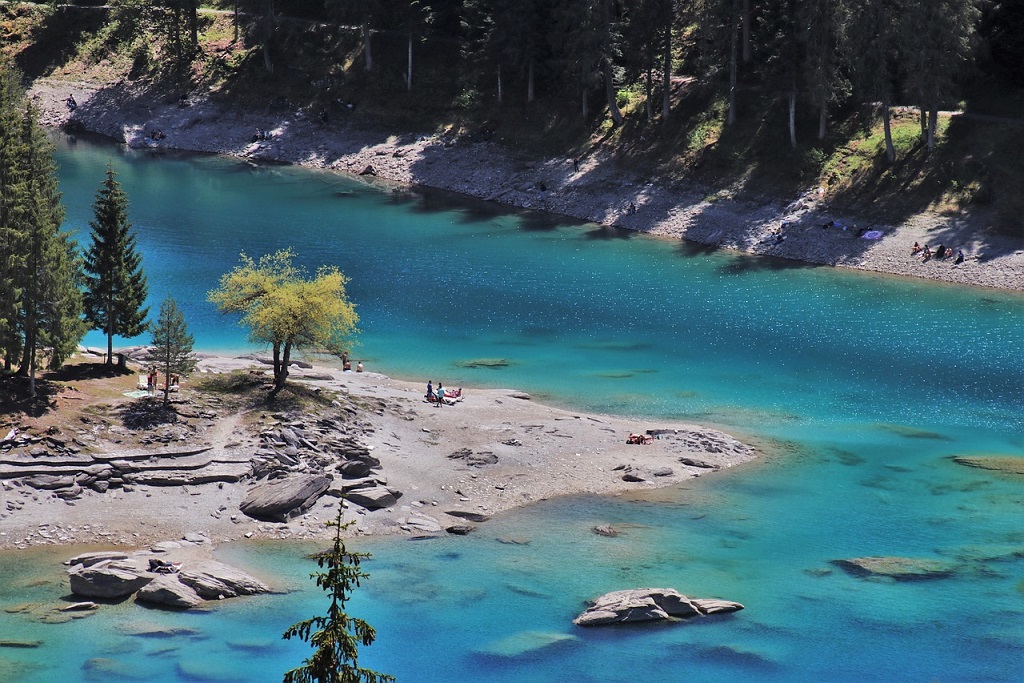
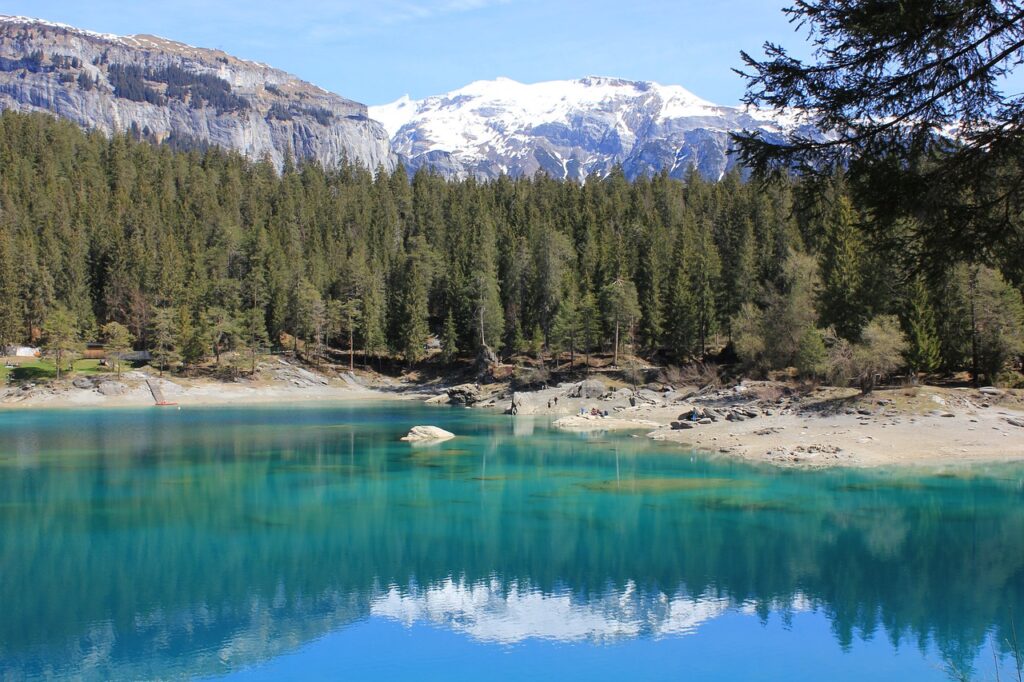

If you’re up for a more adventurous experience, mountain lakes are worth exploring. Lakes like Oeschinensee and Klontalersee are nestled amidst mountainous landscapes, offering breathtaking views. However, reaching these lakes may require some effort.
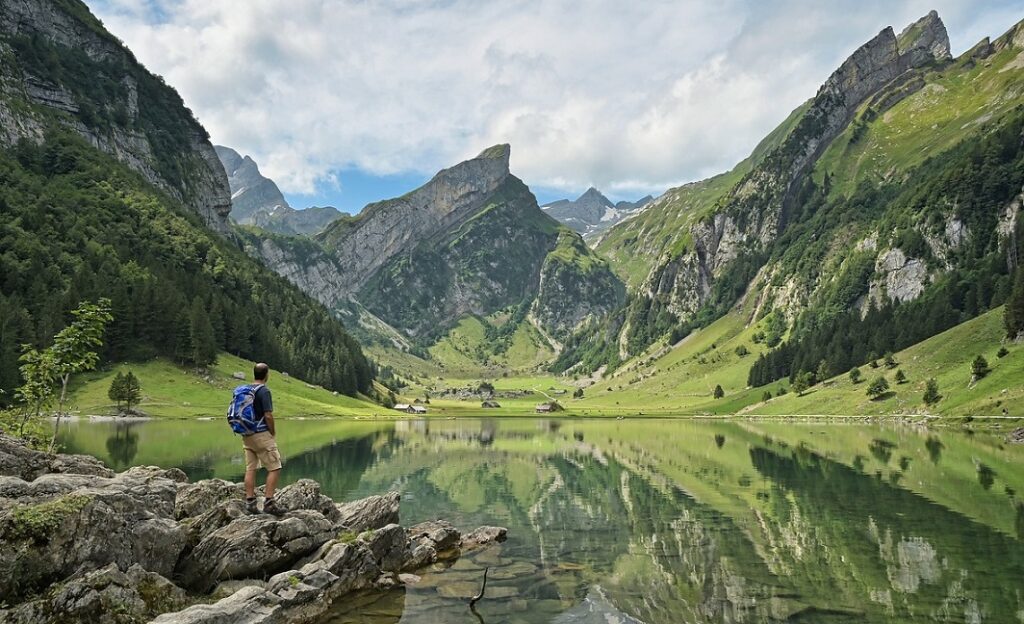


It’s important to note that depending on the altitude, some lakes may be frozen during certain months, especially mountain lakes. Many of these lakes only thaw starting from June, providing a unique opportunity to witness the transition from a frozen wonderland to a vibrant, shimmering lake.
How Much Will Traveling to Switzerland Cost?
Planning the Costs:
It’s no secret that traveling to Switzerland can be expensive, but it’s definitely worth it. Proper planning is crucial to managing your desired budget. Along with accommodation, which can significantly contribute to travel expenses, other items such as transportation, activities, and food also come at a high cost.
For example, a lunch at a restaurant can range from CHF 25 to 35 per person, and a glass of wine typically costs around CHF 5-9.
Here’s a money-saving tip: Drink water for free in Switzerland. This is a fantastic suggestion because even mineral water comes at a price in Switzerland. What many people don’t realize is that there are numerous sources of drinking water scattered throughout the cities of Switzerland. It’s worthwhile to carry an empty water bottle in your bag and refill it throughout the day. The water is refreshing and delightful.
Prices in Switzerland
- Coffee – CHF 3.50
- Cappuccino – CHF 4.50 to 7.00
- Soft drink – CHF 2.80 to 4.80
- Bottle of mineral water – CHF 1 to 4.00
- Draught beer – CHF 5 to 7.00
- Canned beer – CHF 1.50 to 2.50 in supermarkets
- Big Mac – CHF 7.50
- Acommodation – CHF 100 to 200
- Cable Cars – CHF 25 to 200
Cheap Eats in the Land of Chocolate
Swiss cuisine is a delightful blend of French, German, and Italian flavors that will have your taste buds jumping for joy. With meat, potatoes, and a generous dose of local cheese, your palate will be singing.
Here are some ways to indulge:
- Savor Swiss delights at Migros Restaurants and Coop Restaurants, found in most major cities. They offer filling main courses for around $15-17 USD, which is a great option for budget-conscious travelers looking to enjoy Swiss cuisine on a budget.
- Stroll through the streets of cities like Geneva and Zurich and munch on Swiss street food from local vendors. Sample traditional dishes like bratwurst or grab a quick bite of pretzels for around $10-14 USD.
- If you’re staying in an accommodation with kitchen facilities, head to the grocery store to purchase ingredients for a delicious meal. With a budget of around $15, you can buy groceries and cook a fancy meal yourself!
Swiss Cusine
Swiss cuisine is a delightful fusion of regional specialties and neighboring influences. Known for its exceptional cheeses like Gruyère, fondue and raclette are must-try dishes. If you are a cheese lover, consider adding a cheese factory visit to your travel itinerary in Switzerland. A visit to renowned cheese factories such as Gruyères or Emmental allows you to not only indulge in exquisite cheeses but also discover the art of cheese-making firsthand.
Meat lovers can enjoy Zürcher Geschnetzeltes and Berner Platte. Indulge in Swiss chocolate and savor the exceptional local wines. Swiss cuisine celebrates tradition, quality, and incredible flavors.
Chocolate
Treat yourself to the exquisite Swiss chocolate during your visit. Make sure to explore the delicious chocolate bars at Läderach stores. If you’re in Zurich, don’t miss the opportunity to visit Teuscher, renowned as one of the world’s finest chocolate brands. For a truly immersive experience, head to the Lindt chocolate factory in Zurich, where you can take an inside tour and delve into the interactive world of chocolate. And if you find yourself in the French-speaking part of Switzerland, be sure to visit Cailler, a renowned chocolate factory where you can explore its interior and indulge in its delectable creations.
Navigate the Swiss Outdoors
Switzerland is famously known for its breathtaking hiking trails and thrilling outdoor activities. But did you know that visiting museums and parks can be just as fulfilling and often more cost-effective? Most museums charge approximately $15-20 per person and often offer student discounts. For those itching for adventure, hiking trips or other adrenaline-fueled activities start around $70 USD, while paragliding can cost around $160.
How to Get Around in Switzerland
Train
Switzerland’s trains are like Swiss watches – precise, efficient, and elegant. Train travel is the best way to traverse the scenic country and for good reasons. It’s affordable, fast, and reliable. Expect to pay between $50-110$ for a second-class ticket between cities. If you’re planning a long-term journey, the Swiss Travel Pass should be on your to-buy list. This tickets offers unlimited travel by train, bus and boat, free admission to more than 500 museums and some mountain excursions,
Bus
Buses in Switzerland cover the areas not serviced by rail, especially high mountains, and deep countryside. The comprehensive bus system is designed to ensure seamless connections between trains and buses, so you won’t miss a beat in your travels. Swiss travel passes are a one-stop shop for all your transportation needs – valid for rail and bus travel.
Car
Switzerland is a perfect country if you love scenic drives. Renting a vehicle is also a great option that can enhance your trip, as it allows you to optimize your travel experience by reducing distances. With the convenience of your own transportation, you can easily explore various attractions and regions, making the most of your time in Switzerland.
3 Essential Tips for First-Time Travelers to Switzerland
Don’t Get Lost in Translation
Switzerland may be small, but it’s packed with great diversity: languages, customs, and cuisines. From the Swiss-German chic of Zurich to the luscious Italian style of Ticino in the south, every corner has its flavor of cultural enchantment waiting to be explored. So, make sure you research before savoring Switzerland’s unique identity, and brace yourself for some epic discoveries.
Hike Safely
Switzerland’s rural and mountainous areas are a hiker’s Holy Grail, but it’s not all sunshine and roses. Safety comes first, so resist the urge to wander. Take the marked paths, even if it means sacrificing that cute shortcut. Better safe than sorry, right?
Make sure to bring the right clothing. The Swiss often say that there is no such thing as cold weather, only the wrong clothes. Remember that it’s always colder at the top of the mountains, even in the summer. We recommend bringing a windproof jacket for any unexpected weather conditions. If you choose to travel to Switzerland in winter, be prepared for the cold by wearing all the recommended layers of clothing, including thermal underwear.
The Swiss Alps Await
Now that you’ve reached the end of our Switzerland travel guide, we hope you’re feeling inspired to discover all that this spectacular country has to offer.
From the lakeside charm to the cosmopolitan cities, Switzerland is a country that truly has it all. Trust us; you won’t regret it – Switzerland truly is the land of “Heidi” -ful sights and unforgettable experiences!
If you’re seeking private tours, be sure to check out the options available on our website at Swiss Xplorer!

